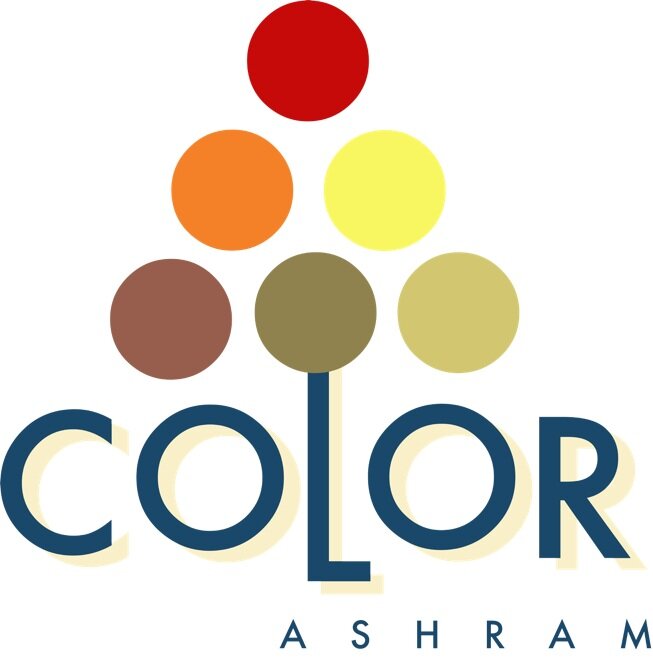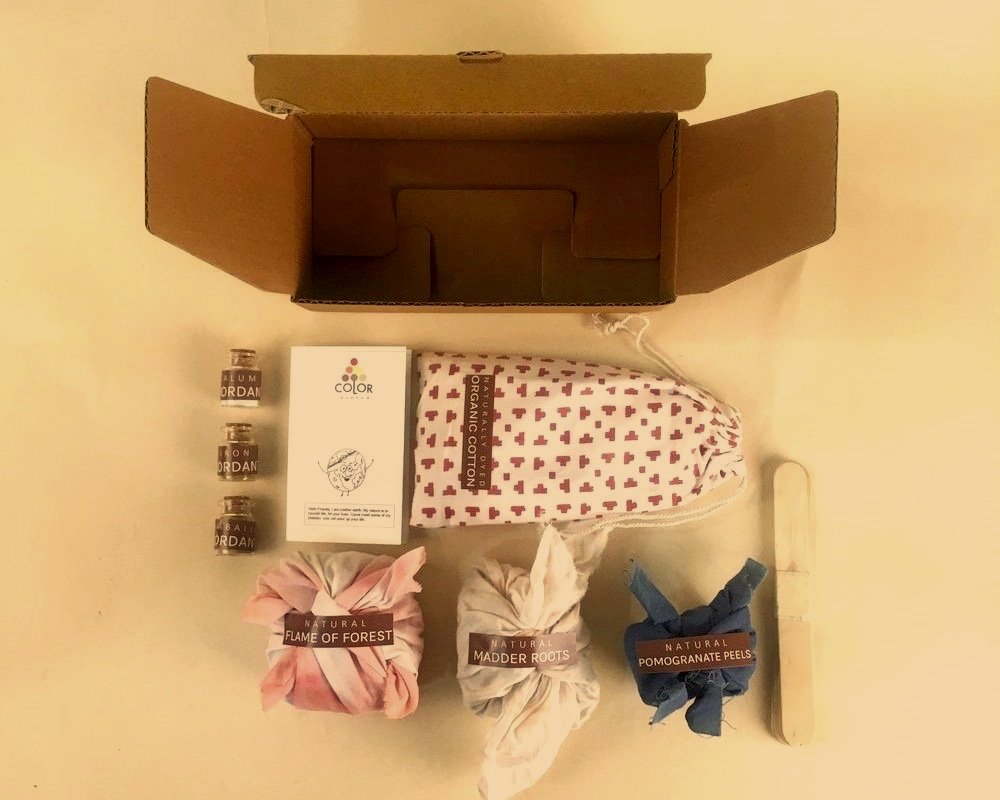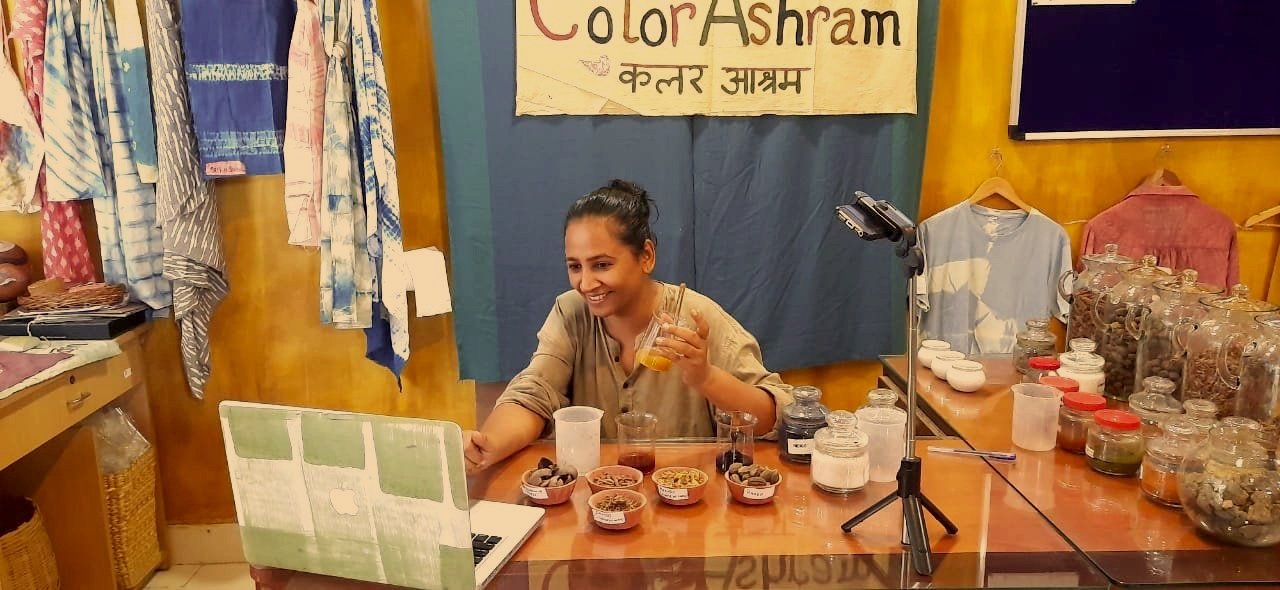The Workshop Series: Creating Your Own Natural Dyes
Color exists abundantly around us in nature. And yet, not all that is colorful can make dyes. Some are stains, some are fugitive, and some are potent dyes, which, when prepared correctly, give birth to stunning shades on yarns, fabrics, and garments. This knowledge forms the basis of the workshops Creating Your Own Natural Dyes. The modules, curated to provide hands-on experience in traditional extraction and dyeing techniques, also equip you with the know-how of the pre and post-processing methods intrinsic to natural dyeing.
Three Workshops to Take you From Beginner To Advanced
As with the other workshops hosted by ColorAshram, Creating Your Own Natural Dyes is offered through a series of three progressive levels - DIY kit for beginners (Level 1 ), online sessions for intermediates (Level 2), offline sessions for advanced learning (Level 3).
Level 1
The Natural Dye Extraction kit packs common plant and mineral mordants (alum, myrobalan, and iron), vegan dyestuffs (pomegranate rinds, flame of forest flowers, and madder roots), and ready-for-dyeing (RFD) organic cotton swatches to help you create naturally-dyed samples in your home or kitchen studio. The tutorial leaflet and video guide you in preparing mordant solutions and dye baths, mordanting the fabric swatches, and finally, dyeing the fabrics using cold and hot dyeing techniques for an array of nine beautiful colors.
Level 2
While the DIY kit serves as a trailer, the intermediate workshop brings forth a full-length feature of natural dyeing through a series of processes that lead to the final colorfast results. Scouring to remove starch or other gunk from the fabric surface. Mordanting with one or more materials to help the dye molecules attach to the fabric surface for better colorfastness in washing and sun exposure. Controlled extraction, with careful consideration of temperature and other variables, to bring out the colorant from the dyestuff. Curing to remove excess dye particles and fix those on the fabric surface for a better bond. What’s more, you learn to journal your experiments and findings for a quick recall or further exploration in the future.
Level 3
Is the favorite red flower in your garden a dyestuff? Can the herbs in your kitchen lend color to your clothes? How about dyeing a saree or shirt using madder roots or Palash flowers? What would all these entail? The answer to these questions and more lie in the advanced level of the workshop. The sessions, conducted in person at the ColorAshram studio, encourage you to dig deeper into color extraction using lesser-known or uncommon raw materials and testing them for potent sources of dyes. The module also gives you firsthand experience manipulating larger fabrics and whole garments for uniform dye results and better colorfastness.




